Flanked by then-Commander-in-Chief of the Russian Navy Admiral Viktor Chirkov (left), then-Commander of the Baltic Fleet Viktor Kravchuk (right), and Russian Defense Minister General Sergey Shoygu (far right), Russian President Vladimir Putin visits the Baltic Fleet at Baltiysk (Kaliningrad) on Russian Navy Day in July 2015.
What can you say about Kaliningrad? It ought to be the loneliest place on Earth. Instead, it seems to be stuffed full of bars that get good write-ups on Trip Advisor, complete with cabarets and entertainment and there’s even a website to advise young (and not so young?) male visitors where they are most likely to find enjoyable (and easy-going) female company. One assumes that means without interference or intervention by the KGB and without too much concern about moral standards being upheld? It used to be called Königsberg and it was German until 1946, when it was given to Russia as part of the war reparations: a Russian oblast mysteriously sandwiched between Lithuania and Poland on the Pregolya River, at the head of the Vistula Lagoon on the Baltic Sea. It’s the second largest city in the whole area, after St. Petersburg. It is also the only ice-free port of Russia and the Baltic states on the Baltic Sea, making it an important place, even if not many people talk about it. Oh, and it’s 322 kilometres from the border of what we might call “Russia proper”: they have no border in common. In the light of its wide range of entertainment opportunities (most of which I’d be far too old to enjoy), it obviously has quite a lot to offer the adventurous, especially the young. It poses a question, however: here it is, 15,1002 of Russian territory (roughly half the size of Belgium), surrounded on all sides by Western Europe during a war between Russia and Ukraine (and very nearly the rest of Europe, too), and nobody is talking about it, or not very much.

Kaliningrad had at one time been the capital of the Dukes of Prussia. Later, it became the capital of East Prussia before being ceded to the Soviet Union at the end of the Second World War under the Potsdam agreement. Surrounded by NATO countries, it now allegedly houses nuclear weapons as well as parts of the Russian fleet, there to defend Russia’s military interests in the event of war. Lithuania has now imposed a ban on the passage of goods across its territory, on their way to or from Kaliningrad, if they are listed in the EU’s embargo. It doesn’t mean that Kaliningrad is completely cut off; it is a seaport, after all. Poland’s prime minister, Mateusz Morawiecki, has said that something must be agreed to settle the problem and urgently, too. Kaliningrad relies on railways and roads through Lithuania for most of its goods, but it has been cut off from some freight transport networks from mainland Russia since June 17 under sanctions imposed by Brussels.
Things were fine until Vladimir Putin’s seizure of Crimea, when pro-Kremlin media suddenly started to portray a number of European countries as “morally depraved” (considering the “physical delights” on offer in parts of Moscow that seems a little like the pot calling the kettle black). Russian media also accused the Western nations of harbouring a visceral hatred of Russia and the Russians, with the Foreign Ministry even going to far as to warn travellers that they ran the risk of being seized by intelligence agencies while out for a walk. It was all utter nonsense of course, just as similar warnings issued to Europeans planning a trip to Russia were nonsense. I was never challenged by the police, despite taking lots of photographs and shooting video footage. When I was in Moscow with a French cameraman and a Belgian sound recordist, we wanted a shot of Lenin’s tomb and, not being allowed to set up a tripod in Red Square (nobody was at that time), we entered the Gum department store, climbed to a landing halfway to the first floor and filmed from there through a large window.
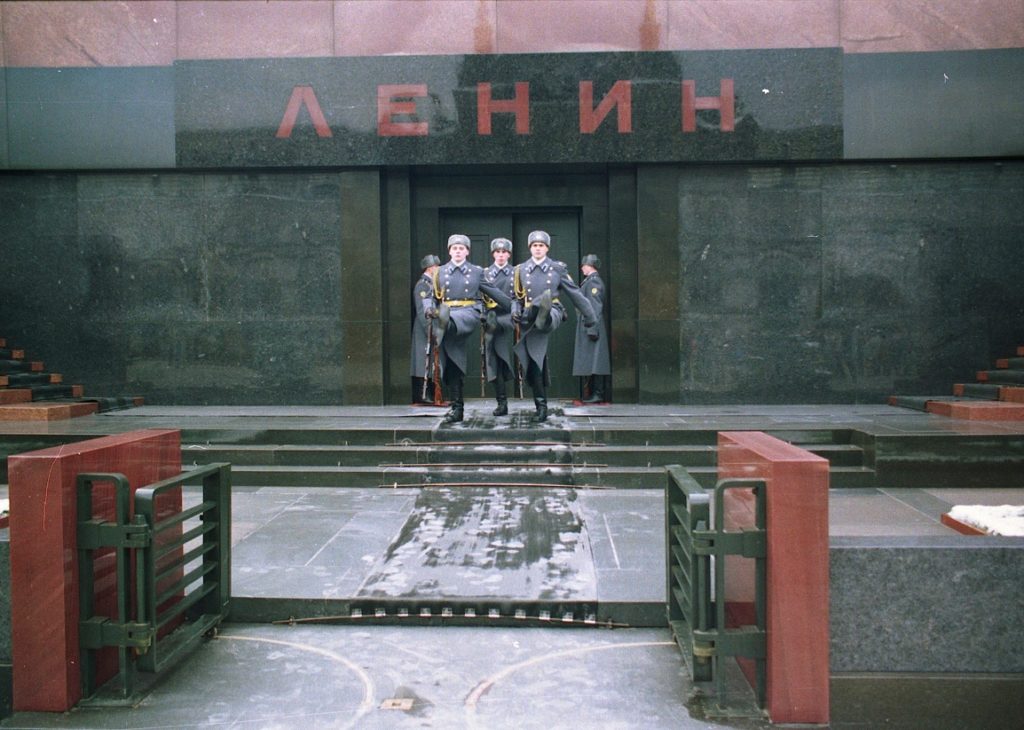
I was the “lookout”, although I took some photos of my own. It was perhaps 20 years ago, but nobody arrested us or even questioned our right to be there, even though we were conversing in French and carrying professional equipment. Да здравствует свободная Россия! (Long live free Russia). Free, but financially poor: I noticed (it was impossible to miss) the groups of people in fairly old and tattered garments on the steps of GUM, offering for sale at just a few kopeks above the prices charged in GUM, the brushes, dusters, tins of polish and other household necessities for which they had patiently queued. They were offering passers-by the chance to sidestep the queues by paying a couple of kopeks more than the full shop price. It’s very hard to imagine that their efforts contributed much to the business of putting food on the family table.
IF VLAD RULED THE WORLD?
Disliking the violence and threatening behaviour of Putin does not imply a hatred of the entire country. Personally, I would recommend that everyone should visit Russia if they get the opportunity, and that they should also sample the historic charms (not just the borscht, shchi cabbage soup and excellent vodka) of Moscow, although possibly not just at the moment. It’s worth remembering the words of Honoré de Balzac in La Peau de Chagrin: “La haine est un Tonique, elle fair vivre, elle inspire la vengeance; mais la pitié tue, elle affaibli encore notre faiblesse” (Hatred is a tonic, it makes one live, it inspires vengeance; but pity kills, it makes our weakness weaker). The question is: who is trying to whip up hatred here? From all the speeches I’ve heard and articles I’ve read, it’s not a demonic hate-filled West that’s to blame but a President inside the Kremlin who has dreams of universal leadership, imposed with violence on an unwilling world, the whole narrative marinaded in a soup of ultra-nationalist hate. There are times when Putin reminds me of the fictional character created by British comedian Peter Cook. In Cook’s sketches his on-going joke was the claim that he believed he should rule the world. The character, “E.L. Wisty”, dressed in a long, dull raincoat and hat, spoke in a boring monotone in television comedy shows about the activities of “the World Domination League”, of which he was supposedly the leader and almost certainly its only member. In those sketches, he never smiled, nor showed any sort of emotion, however much the audience was laughing. And he was very funny. I’m sure Putin could raise a laugh, too, because, like E.L. Wisty, he seems to really believe that he should be ruling the world. Sorry, Mr. Putin: I love your country and its wonderful historic cities, its friendly, interesting people, its architecture and stretches of incomparable wildernesses. Its history is magnificent, its historical character incomparable, but the idea of you ruling the world (or even Europe)? No; I think I’d prefer to be ruled by E.L. Wisty. At least we’d get to laugh occasionally. Anywhere near Putin would be a totally humour-free zone.

Most Russians, living in the vast, almost measureless heartlands, have never travelled to Europe; nor are they likely to. It’s a truly massive country. For them, the Kremlin’s unpleasant (and untrue) propaganda works well; if Putin or his goons say something, it must be true, and it’s likely to be believed without question in Bashkiria, Dagestan or Kabardino-Balkaria, for instance. However, residents of Kaliningrad have one massive advantage over their fellow countrymen (and women) from the Urals or the Steppes, from the Tyva Republic or Tatarstan. They can travel freely to the EU, if they wish. And they do: to stock up on products that aren’t available at home. There’s no doubt that Putin’s verbal attacks on Western European countries have an effect, but the people from Kaliningrad know them to be untrue, or at least have good reason to doubt them. It’s a Russian EXclave (an ENclave would have to be Inside the country) that seems to be quite un-Russian. The city centre of Kaliningrad is 120 kilometres from the Lithuanian border and just 48 kilometres from Poland. On fine weekends and public holidays, there are long tailbacks at the border crossing points, with the port city of Gdansk an especially popular place for Kaliningrad people to visit. The Kremlin’s claims about Western governments and citizens are largely seen for what they really are: propaganda. Or in other words, lies. Roughly 70% of Kaliningrad’s one million residents hold passports and they often travel to Lithuania and Poland, compared with just 30% for Russia as a whole. It doesn’t mean that Kaliningrad is chock-full of “traitors” or “turncoats”, nor is it a liberal stronghold. Many Kaliningrad people see themselves as patriotic Russians, while they also provide plenty of members for the ultra-nationalist pro-Putin National Liberation Movement, in Russian: “Национально-освободительное движение” or “НОД” (NOD).
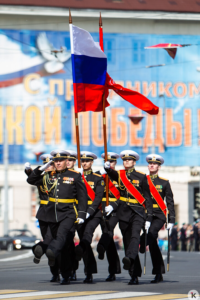
The region – as a region – was founded by Teutonic Knights in the 13th century. In Soviet times, travelling to Moscow merely meant a very long train journey, all of it across Soviet territory. In the immediate aftermath of the Second World War, the Soviets annexed it and renamed it in honour of the Bolshevik revolutionary, Mikhail Kalinin. Stalin expelled its German residents, replacing them with Soviet citizens, who viewed it as “moving to the West”, whilst technically remaining in the East. As a strong outpost for the Soviet military and their families, it was strictly off-limits for foreigners until 1991. Even so, it was a weak spot, opening up the rigidly controlled Soviet Union to Western influences. Soviet sailors would bring back clothes, books, and records of rock music from the West and even further afield. The city also housed the so-called House of Soviets, an understandably famous example of Soviet-era brutalist architecture, standing on the site of the 13th century Königsberg Castle, blown up in 1968 on the orders of the then soviet leader Leonid Brezhnev, having already been largely destroyed by RAF bombs and by Soviet shells. The shells were fired in its recapture, a project that took three months and a lot of explosives to complete, leaving the unfinished (and hideous) building looking rather like the head of a robot who has been buried up to its shoulders. During the Cold War, Kaliningrad was home to the Soviet Baltic Fleet.
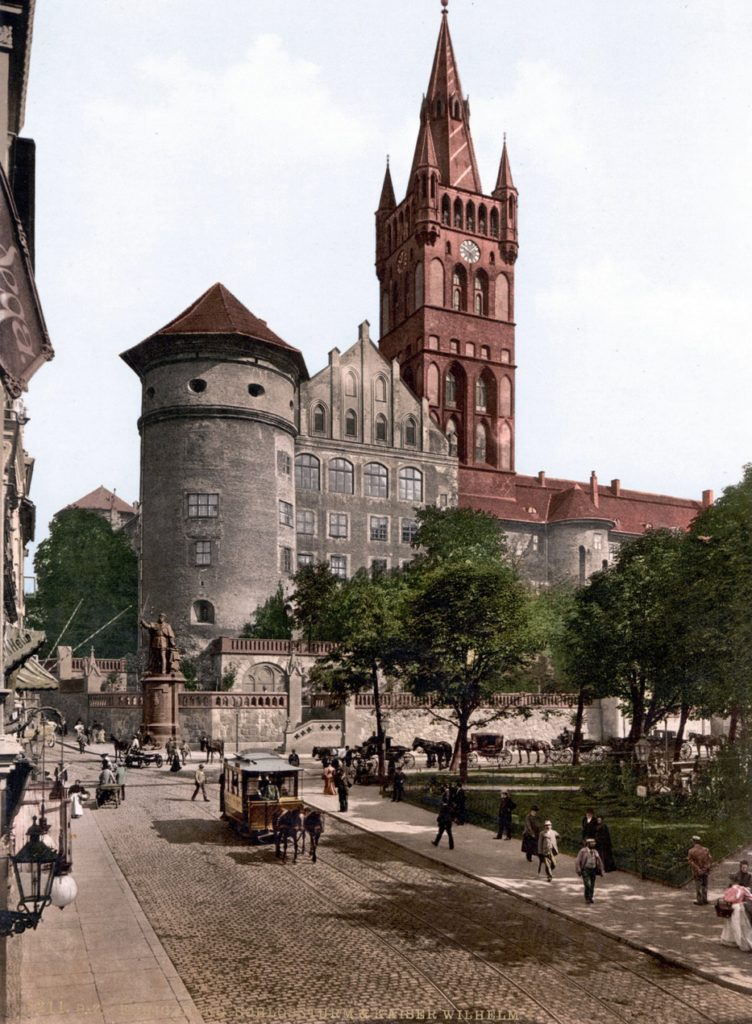
In more recent times, there have been calls to “rediscover” the city’s Prussian past, despite the idea being condemned among Kremlin supporters as “Germanisation”. It’s an issue about which much has been written in Britain’s left-leaning Guardian newspaper. One pro-Putin journalist, Nikolay Dolgachev (not writing for The Guardian), has described it as being “infantile” and has likened it to modern-day Americans getting nostalgic about the culture of native Americans (and what would be wrong with that anyway?). There have been repercussions, however, such as the forced closure of a local cultural and educational facility known as the “German-Russian House”, having been declared a “foreign agent”. I’m not sure how a house – a building – can be an “agent”. Furthermore, an Aeroflot steward was recently dismissed for referring to Kaliningrad as Köningsberg just before take-off. A Russian journalist born in Kaliningrad, Oleg Kashin, has accused the Kremlin of trying to obliterate any part of the region’s history that isn’t devoted to the Soviet Union, and yet it was only annexed by the Soviets at the very end of World War II.
FLAGS OF MANY COLOURS
Given the delicate sensibilities of the Kremlin’s current occupant, how long before it becomes illegal to sing: “The people’s flag is deepest red, it shrouded oft our martyred dead, And ere their limbs grew still and cold, Their hearts’ blood soaked its every fold”? Putin could decide (not without reason, I suppose, given the song’s revolutionary lyrics) that it is a call to uprising, to arms and to revolt against leaders – any leaders – which is the last thing Putin needs. And yet, if you scratch the surface of most Westerners, you’ll find they’re NOT anti-Russian, they’re NOT even very anti-Putin. They’re just anti-anyone who thinks they have the right to determine the beliefs – in very fine detail – of everybody near them. It’s the mistake Adolf Hitler made, and Napoleon Bonaparte, not to mention Caligula, Pol Pot and Ivan the Terrible, and, no doubt, all the other self-important leaders throughout history who believed it was their destiny to lead and the destiny of the rest of us to follow. They should remember that E.L. Wisty never actually won.
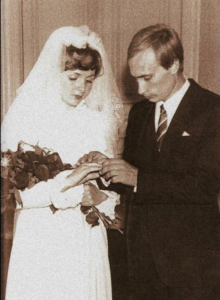
It’s worth noting, however, that Putin’s ex-wife, Lyudmila Putina, was born in Kaliningrad in 1958, and despite its relative isolation, the place experienced far more “Western” influences than much of the rest of Russia. The most noticeable remnants of the oblast’s Prussian past are seven neo-Gothic gates, encircling the former city limits, as well as its redbrick Lutheran cathedral, where the German philosopher, Immanuel Kant, is buried. He died there in 1804. There is now a roaring trade in Immanuel Kant souvenirs, such as fridge magnets that read “Kant touch it” or “Yes, I kant”. I don’t think he’d like to be remembered for cheap puns when he’s rather more famous for his metaphysics, epistemology, ethics, political philosophy, aesthetics, and many other fields. You can, if you prefer, buy miniature busts of Putin and Stalin, decorated with the amber for which the region is famous (I once bought a small brass bust of Lenin, but that was in Budapest, not in Kaliningrad.) What’s been called “Germanification” probably won’t happen while Putin remains powerful and very anti-European, but there have been attempts to resurrect old street names from Prussian times and even to rebuild the damaged parts of Königsberg Castle. There again, there are still followers of Kant’s existential philosophy, which he called “transcendental idealism”, under which people experience only the “appearance” of things and not really the things themselves. In other words, things don’t really exist in any physical way, except in as much as we perceive and experience them.
Nuclear warheads, however, are most certainly real; imagining they’re not there won’t make them go away. To put it in terms of those jokey slogans: “You Kant fire those things at me”. In fact, Russia has placed Iskander nuclear-capable missiles in the region, claiming it was in response to US plans to deploy a nuclear ballistic missile system to defend Europe. The increasingly competitive installation of defensive measures reminds me of a children’s story, I think it was called: “The Knights Who Couldn’t Fight”, in which rival groups of knights try to over-impress each other with the ever-increasing impenetrability of their armour.

One type is inevitably superseded by another, even tougher, until peace wins out because both sides are so weighed down by their protective armour that they can no longer fight each other at all. In front of their annoyed but helpless kings, whose worthy aim it had always been to protect their fighting men, all they can do is shout abuse at one another, and even then only in muted tones: their voices are almost silenced by the impenetrability of their face masks and helmets. In the end, they can no longer stand up and return to farming. It seems like an excellent idea to me.
Since Lithuania became a member of the EU, it has been impossible to take the overland route between Mother Russia and “daughter” Kaliningrad without setting foot (or perhaps wheels) on EU territory. Its military importance was reduced by the termination of what had been the USSR, and a great many associated military jobs were lost.
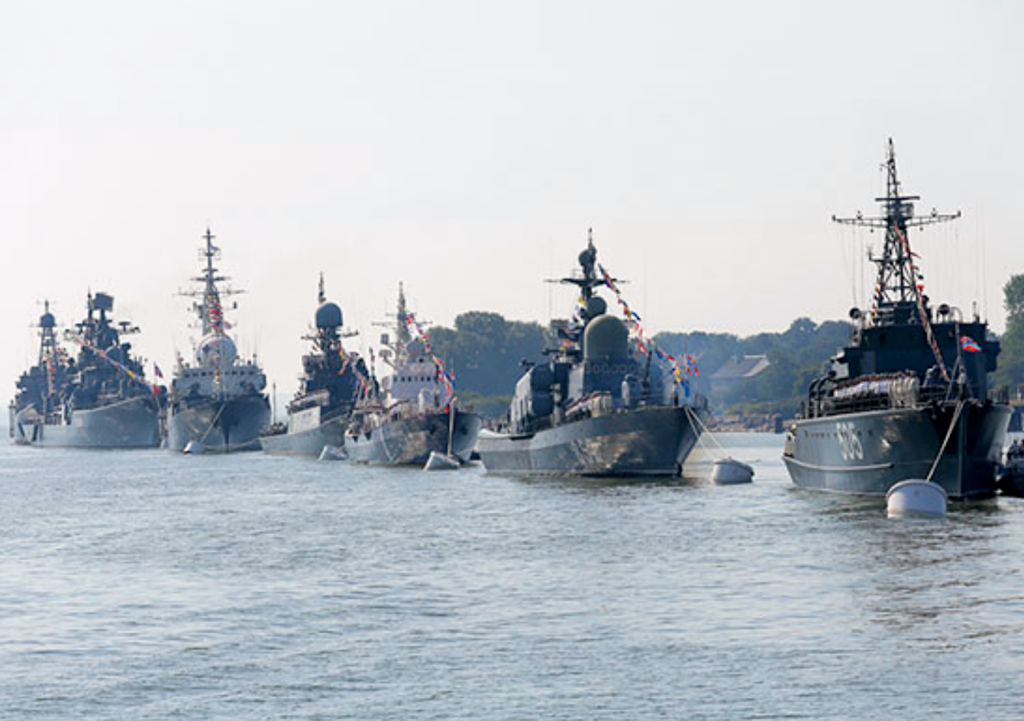
However, Kaliningrad is still of considerable strategic importance to Moscow, housing, as it does, the Russian Baltic Fleet at the port of Baltiysk. Both the EU and Russia appear to agree that some sort of plan is needed for the movement of goods between the exclave and the rest of Russia. According to Russia’s Deputy Foreign Minister, Alexander Grushko, talks are currently underway between the EU and the Kremlin on ways to free up the transit of goods, with Moscow making it ten times harder by threatening to impose a wide range of retaliatory counter-measures to punish Lithuania if no agreement is reached. It’s not a technique noted for its successes in previous cases. Russia is making much of its threats but it’s not saying what they might be. One gets the feeling that Putin must really hanker after those “good old days” of threat and counter-threat, continually upping the ante until he can start a war. He’s not the sort of chap you’d invite to a party unless you wanted to have to call the police to restore order and an ambulance to carry off the walking wounded.
IMAGINATION, NOT REASON
Kant wrote that “Glückseligkeit ist nicht ein Ideal der Vernunft, sondern der Einbildungstraft” (Happiness is not an ideal of reason but of imagination). However, we are where we are (even if Immanuel Kant might possibly disagree). Moscow and Brussels are now said to be in discussions to try and resolve the issue, which concerns, of course, the transit of goods to and from Kaliningrad via Lithuania. Moscow says it’s also working on a package of measures with which to “punish” Lithuania if the talks fail. Negotiating with threats doesn’t seem like a very promising way of reaching a mutually agreeable solution, however some form of punitive measures will be applied, according to Grushko.
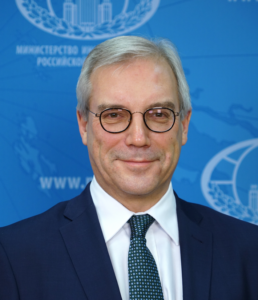
“After all, we have a certain dialogue with the European Union,” he told India’s Republic World. “And we have conveyed our concerns [to the EU]. I believe we have been able to explain to them that the decisions Lithuania has insisted on will result in serious costs not only for Lithuania, but also for the EU,” he said, anything-but-affectionately. “According to public statements made by representatives of the European Commission, this signal has reached the addressee and it has become concerned over the problem,” Grushko was quoted as saying. It’s the wort of negotiation that might have been familiar to Al Capone and his cohorts or the murderous East London gangs run by the notorious Kray twins, Ronnie and Reggie.
The people of Kaliningrad seem to make the most of the proximity of EU shops and markets. As I pointed out earlier, around 70% of them have passports, compared with just 30% in the rest of Russia. Apparently, Russian cheeses don’t enjoy a wonderful reputation (although they’re getting better, it seems) and the same goes for various types of ham. But there are some products that many Russians crave and which are not produced at home, such as parmesan, camembert and jamón. The locals, then, see reality in Kaliningrad’s streets, rather than the strongly edited (and invariably negative) version permitted in the rest of Russia. Kaliningrad is no utopia, of course, and nor is it a place where the residents hail Europe as perfect.
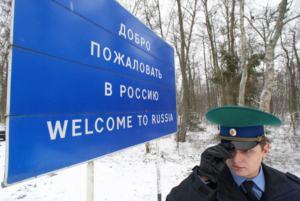
However, they make the most of their modern shopping centres, even if while shopping there some of them wear T-shirts that show Russian Iskender nuclear missiles (“Россия на первый план!” – “Russia to the fore!”), while independent media has been largely silenced (along with activists for other parties) and Putin’s ultra-nationalist NOD followers blame all their problems on the West. Even so, experts say that most of the NOD followers and others will still choose to do their shopping in Poland or Lithuania if possible. They refer to trips to other parts of their massive country – Moscow for instance – as “going to Russia”.
Kaliningrad, German from 1255 to 1946, was a vital seaport, known as Königsberg in German or Królewiec in Polish, and it was ceded to the Soviet Union at the end of the Second World War under the Potsdam agreement. It lies on the Pregolya river and during the War, it was almost destroyed by Stalin’s Red Army. German citizens were evicted in 1947 and new settlers from Russia and Belarus were brought there to replace them, to live and to work, with the city being closed to foreigners until 1991. It’s a small city, with a population of less than half a million. Its cathedral, long ignored by the Soviets but now restored, houses the tomb of the great philosopher, Immanuel Kant, who lived and worked in Kaliningrad all his life.
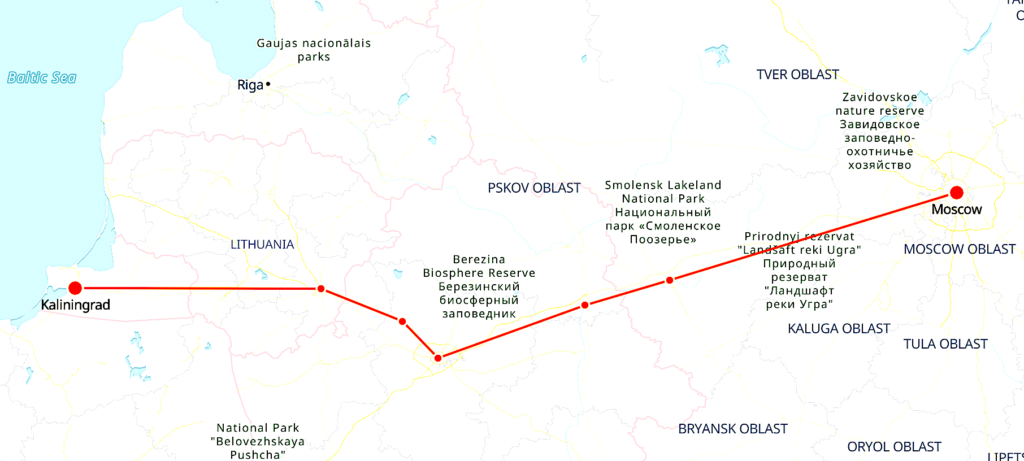
In fact, getting to Moscow used to involve a long (overnight) train journey, crossing a number of various Soviet republics along the way, but all parts of a single political entity. That’s no longer an option, even with the visas to cross EU territory demanded by Lithuania and Poland. For Europe’s vodka-lovers, it’s also a tragedy. Yes, one can still buy excellent vodka from, say, Latvia, but with all the trade restrictions in place, we Europeans no longer have access to such makes as Zyr, Huskie, Green Mark, and Hammer and Sickle, (among many, many others, like the very expensive ‘Jewel of Russia’ vodka, which I have never tasted). Russia stretches across eleven time zones, so if the people of Kaliningrad are feeling especially patriotic, they can watch Putin’s New Year address to the nation a full nine hours before the New Year actually starts for them. According to the excellent Nelmitravel.com website, to get to Kaliningrad from Moscow remains a tricky business. You have to travel through Lithuania and Belarus, and were it still physically possible, this would require a Belarus transit visa (the train from Moscow to Kaliningrad goes to Minsk and then Vilnius and then Kaliningrad). These transit visas need to be obtained before the time of your journey, and you need to have proof of your train tickets when you apply for the requisite visas.
What other fascinating facts can I offer you? Russia has borders with more countries than any other in the world: 18 in all, although three of them (with North Korea, Japan and the United States) are “water borders”. Any customs post built to separate them would have to float. Apart from the 1,089 kilometres journey by rail from Moscow to Kaliningrad (which is no longer an option) it’s also 631 kilometres from St. Petersburg to Moscow. The St. Petersburg part of the trip takes just a surprisingly brisk three hours aboard a Sapsan train (rather than the several days it used to take in the days of steam).
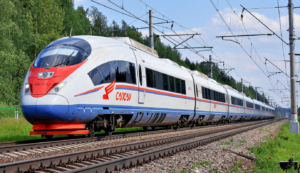
The Sapsan, by the way, can travel at a speed of 350 kilometres per hour at its maximum, but normally chugs merrily along at a more modest 240 to 250 kilometre per hour. If you get bored, there are video and audio facilities provided at every seat. Hot and cold meals are on offer from a trolley service and there is also a buffet. It’s an irony of modern life: the more comfortable travel provision becomes, the less time you need to spend doing it. But that’s just to St. Petersberg; you haven’t yet reached Kaliningrad. Still, Russia remains a huge country; in fact, it has been the world’s largest since the 16th century. Few would disagree that the Sapsan is a big step forward, although it’s not much help if your ultimate destination is Kaliningrad; the only working option is to fly. Incidentally, Russia is 26 times the size of France, 47 times the size of Germany and makes up almost 11% of the global landmass. For any interested space travellers, its surface area is greater than that of the planet Pluto, too. Look at Russia Beyond https://www.rbth.com/ for this and other fascinating data about Russia; it’s truly mind-blowing stuff about a truly mind-blowing country. It’s just a shame that it’s ruled over by a megalomaniac like Putin. The Russians deserve better.
SEVERENCE AND SUSPICION
Some of today’s Kaliningrad residents fear that Moscow wants to cut them off increasingly from the rest of Russia. Hanna Mäkinen, a Project Researcher at the University of Turku’s Pan-European Institute in Finland, wrote in an article on Baltic Rim Economics, that Russia’s unprovoked attack on Ukraine has placed Kaliningrad in an especially difficult position. “Being sandwiched between Lithuania and Poland and detached from the mainland Russia,” she wrote, “the region has had close connections with its neighbours and high dependence on imports. Although the socioeconomic development of the Kaliningrad region is dependent on the motherland, the special characteristics of the region make it particularly vulnerable to disruptions in the EU-Russia relations and strengthen the effects of isolation.” And there has certainly been disruption, on a massive scale, as Ms. Mäkinen points out. “The increasing tensions between Russia and the West already since Russia’s annexation of Crimea and the outbreak of the war in Donbass in 2014 have affected Kaliningrad’s external relations, resulting in decrease in foreign trade and border crossings

Due to Russia’s military aggression towards Ukraine in 2022, the cross-border connections between the Kaliningrad region and the EU are limited further, which affects local businesses and residents alike.”
The report paints a bleak picture of the exclave’s economic prospects. “Companies in the region are lacking raw materials, equipment and components” due to the Western sanctions restricting exports to Russia. The agricultural sector and food processing industries in the region, also dependent on imports, have already been facing shortages due to Russia’s earlier import restrictions on EU foodstuff and agricultural products. In addition, the collapse of the value of the rouble has made imported products more expensive in the region. The withdrawal of foreign companies from Russia is also affecting businesses in Kaliningrad. Car manufacturing company Avtotor, which has been assembling foreign car models directed for the Russian market, is suffering because companies such as BMW have ceased their partnership with it. I’m sure that Russia must have an equivalent saying to one that I know from English: “You can’t make an omelette without breaking eggs.” The question is, does Putin really think it’s worth breaking quite so many eggs just to make him into a poor man’s tsar?
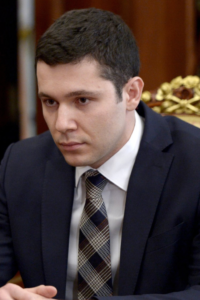
Even for ordinary citizens of Kaliningrad, crossing the border to buy something a tiny bit exotic has lost its allure with the virtual collapse of the rouble. As Mäkinen shows, COVID-19, taken together with the strained Russia-EU relations and the weak and weakening rouble have limited pleasure trips from Kaliningrad. The expulsion of Russian banks from the SWIFT money transfer system has increased the difficulties, while some EU member states have been calling for a Schengen-wide ban on the issuance of visas to Russian citizens. However, the rail transport system is still running, meaning that it’s not impossible to make such a journey; just very difficult. Sanctions have undoubtedly had an effect, but goods already in transit between mainland Russian and Kaliningrad still move, unaffected by the EU-wide ban on Russian road transport, imposed in April this year, while maritime and air transport between Russia and Kaliningrad don’t rely on transit countries.

Mäkinen’s report makes it painfully clear that maintaining relatively easy movement of people and goods has been very important both for Kaliningrad’s economic viability and its residents’ quality of life. “The economic decline and uncertainty in Russia, as well as increasing isolation of the Kaliningrad region, will decrease the wellbeing of its residents, leading to growing discontent with the economic situation and living conditions in the region,” writes Mäkinen, but I must point out that she adds a rider: “However, it is very unlikely that the public dissatisfaction will have any concrete consequences, such as to trigger protests against the current regime.” No-one protests against Putin unless they have a death-wish or are incredibly courageous. Perhaps it’s just as question of “can” or “Kant”?
BLOOD AND STATISTICS
Sanctions imposed by the EU in protest at Russia’s unprovoked aggression are having unintended consequences that have already been affecting industry in Poland. As a result, Moscow and Warsaw have agreed that some sort of plan must be devised concerning the movement of goods between the main part of Russia and Kaliningrad. So far, it’s been mainly steel and industrial goods that have been affected, and it’s been suggested that if Poland were to exempt the territory from sanctions aimed at Moscow, a deal could be in place very quickly. The Polish Prime Minister, Mateusz Morawiecki, told a press conference that: “It is worth agreeing a plan that will not violate de facto implementation of the sanctions, because, frankly speaking, the Kaliningrad Oblost is a very small part of Russia.”

There may be a problem with Lithuania, however, which has long been a fierce critic of Russia and has already been at odds with Brussels and with Germany over talk of trying to diffuse the row. The fact is that nobody trusts Putin and his “I want to be Tsar” complex. Lithuania, having once been ruled from Moscow, knows how untrustworthy it is.
Plato once wrote: “If you do not take an interest in the affairs of your government, then you are doomed to live under the rule of fools.” This, sadly, may well be true. How one sets about stopping such an outcome from unfolding is a bigger question and a far harder one to answer. But as the war in Ukraine struggles bitterly on through a sea of blood, I feel tempted to quote a man who knew more about pointless, bloody conflicts than most people: Joseph Stalin. “A single death is a tragedy,” he wrote. “A million deaths is a statistic.” Well, he should know.

